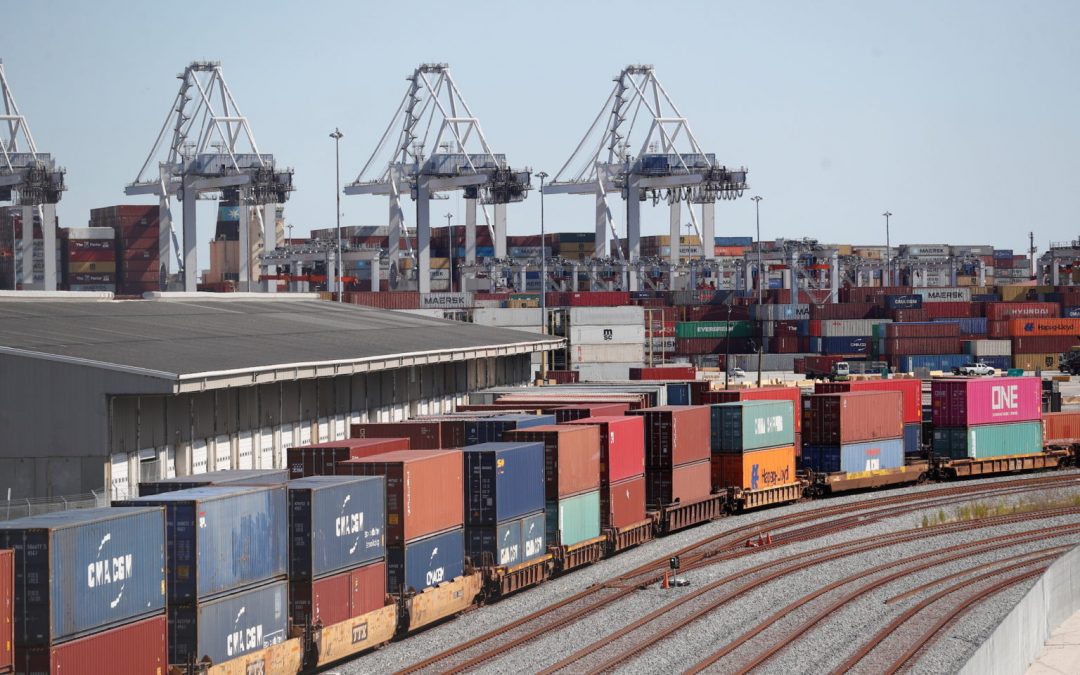The diversification of product sourcing away from China in the post-Covid era as manufacturers and retailers seek more supply chain resilience will have a major impact on trade and shipping patterns, according to leading supply chain and procurement experts.
Jon Gold, VP for Supply Chain and Customs Policy at the National Retail Federation, said U.S. retailers had been looking to diversify supply chains even before the pandemic, not least because the U.S.-China trade war and increased tariffs had encouraged them to find producers located outside China.
Speaking on the launch episode (http://xnnki.mjt.lu/lnk/AVkAAAvBHr8AAchaClgAAL9YC9YAAYCseWIAnIUhABYpXABj4573_T4s2nfTQ1uY0Y2jScc0cgAV2wU/2/4mJSIkmTuFuqMt3lemD0Dg/aHR0cHM6Ly93ZS50bC90LWFXOTV0Y2VmOTI) of The Freight Buyers’ Club podcast, produced with the support of Dimerco Express Group, Gold told host Mike King that companies were looking to diversify “not just because of the tensions in the US-China trade relationship, which I think are going continue, but also because of what has happened over the past couple of years with all the supply chain challenges”. He added: “[They realised] that they need a more diversified, more resilient supply chain.”
Zero-Covid policy = tipping point
Speaking on episode 2 of The Freight Buyers’ Club, which will be released next week, Bjorn Vang Jensen, Executive Director, International Transport at Cummins and formerly Global Head of Logistics at Electrolux and VP Advisory Services at Sea-Intelligence consultancy, admitted he had previously been cynical when near-shoring, friend-shoring and re-shoring of manufacturing were raised as solutions to enhance supply chain resiliency.
However, he said pandemic disruption had changed the trading landscape, in particular because China’s zero-Covid policy had “a massive impact on global supply chains, and I think people are done with having massive issues with supply chains”.
Diversification winners
The diversification process is already underway, although China continues to dominate the U.S. sourcing landscape. According to PIERS, part of S&P Global, China including Hong Kong supplied 40.7% of US imports last year, although this was down from the 42.4% recorded in 2021.
Countries in South Asia, Southeast Asia and Latin America stand to benefit most from a shift away from China. Paul Page, Editor of the WSJ Logistics Report at the Wall Street Journal, told The Freight Buyers’ Club that India had great potential “I see a lot of changes with Apple and semiconductor manufacturing that I think are going to have a profound impact on India,” he said. “Not necessarily this year, but over time.”
Another beneficiary will be Vietnam which has already seen large increases in container shipping volumes and has been investing heavily in its infrastructure. “Countries like Thailand, Vietnam and others have stepped into the vacuum that China left and I don’t know that China can completely pull back from that,” said Jensen.
He predicted Thailand would benefit from a shift of cargo away from China, Singapore’s role as a key global shipping hub would be reinforced, while new terminal facilities in Indonesia could enable more direct deep sea calls as manufacturers took advantage of its favourable demographics.
The upshot of these changing cargo flows within Asia would prompt container lines to adjust rotations, although Jensen insisted these schedule alterations would be “evolutionary” rather than “seismic” shifts for the box shipping sector.
Fragmented shipping demand
Page believes the growth of supply chains not focussed on China will inevitably add complexity to procurement and logistics planning. “In some cases, I think you could say there are two supply chains forming,” he said. “A traditional China-based supply chain and a non-China supply chain and I think those are playing out in different ways for different products.”
He said that more fractured, diverse supply chains could render the largest 24,000 TEU vessels plying direct routes from Asian hubs to Europe “less significant”.
He added: “You have to wonder what that means for capacity decisions by carriers. Are the economies of scale still there? Do they matter as much? Do they make that difference? Are there other things that matter?”
China alternatives are limited
However, diversifying retail sourcing is not easy, according to Gold (see video link attached and YouTube link here:). “It takes time to switch your supply chain,” he said. “It’s not something that can be done overnight. It takes months, if not years, to find new vendors and suppliers that can meet all your requirements on quality and quantity and product safety requirements and making sure you’ve got the skilled workforce where it needs to be.”
Moreover, he said not many countries possessed China’s impressive logistics capabilities and infrastructure. “There’s no new China that has all the capacity that China does, so you can’t move everything out of China all at once,” he added.
Jensen also said it would be foolhardy to write off China. “They have changed their [zero-Covid] policies,” he said. “They understand now, I believe, that this was detrimental to China’s reputation as the factory of the world. So, whilst I do now agree that some near-shoring, friend-shoring and reshoring is taking place, I do not believe that this will pull the rug from under China, and China’s place in the world economy.”
Source: Hellenic Shipping News






